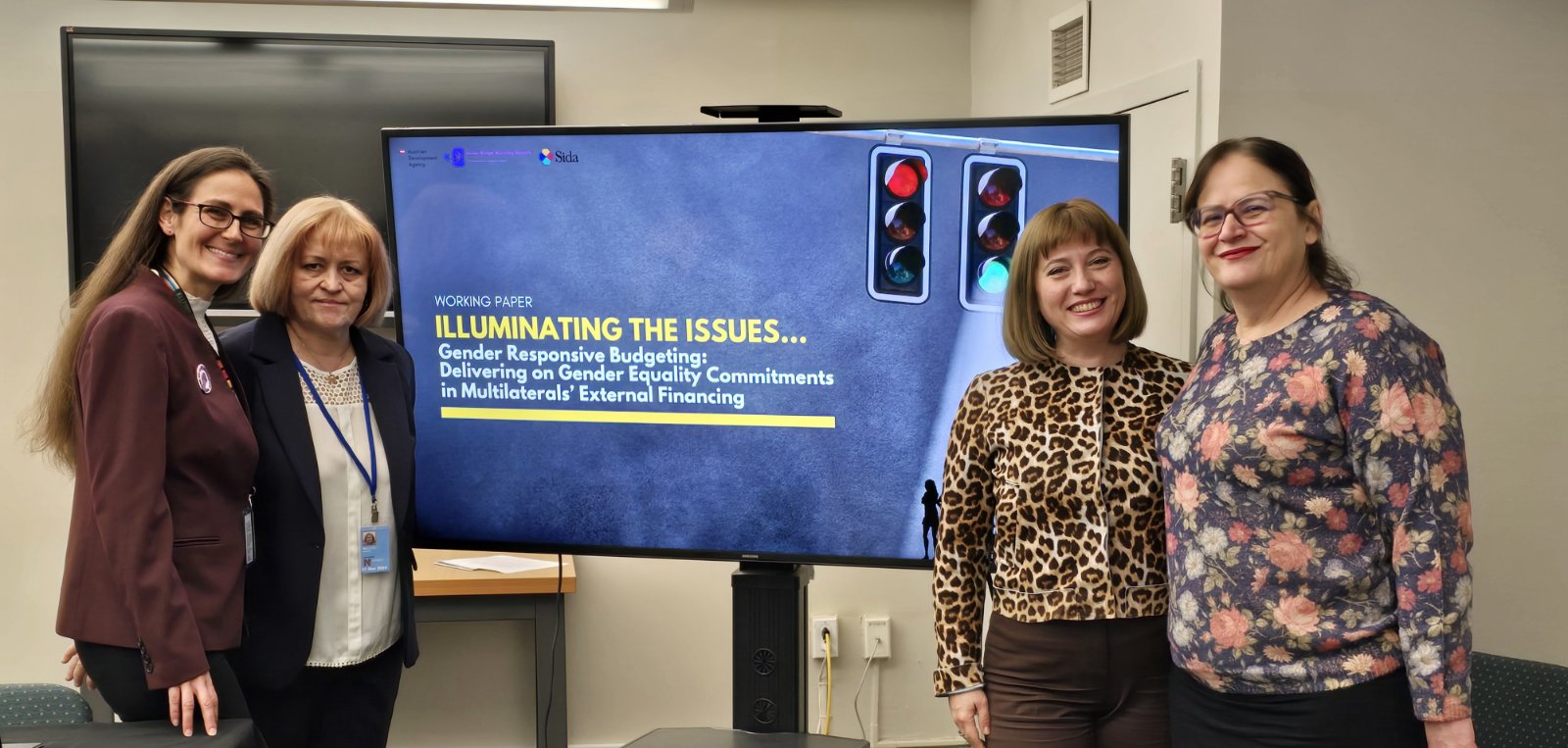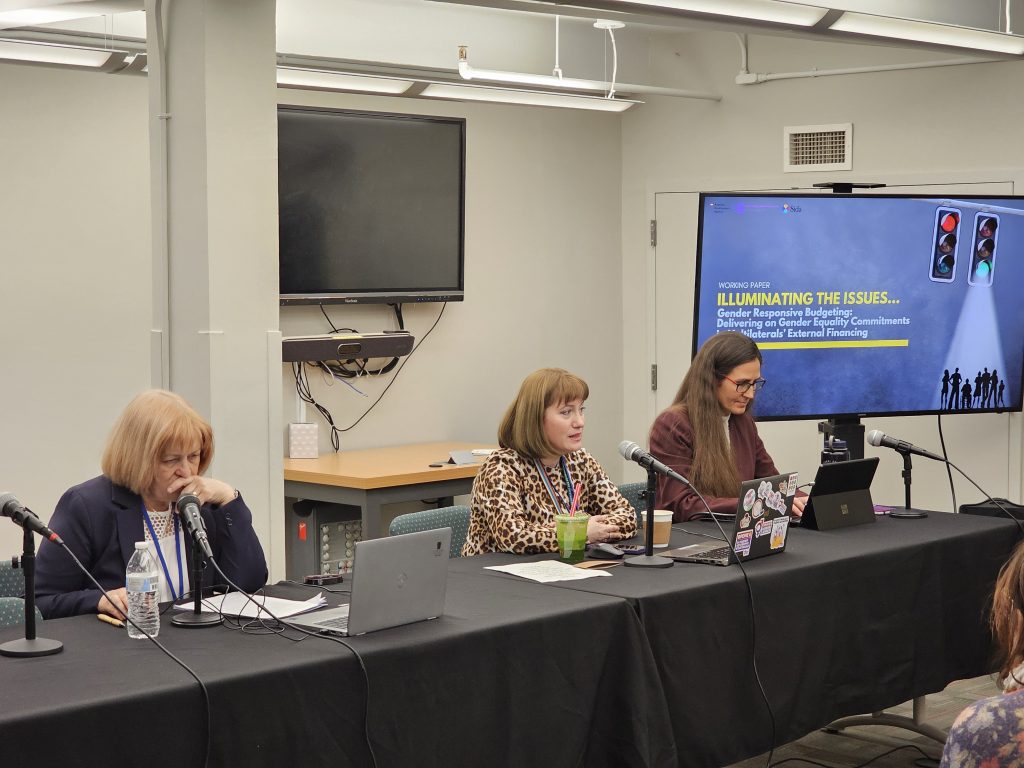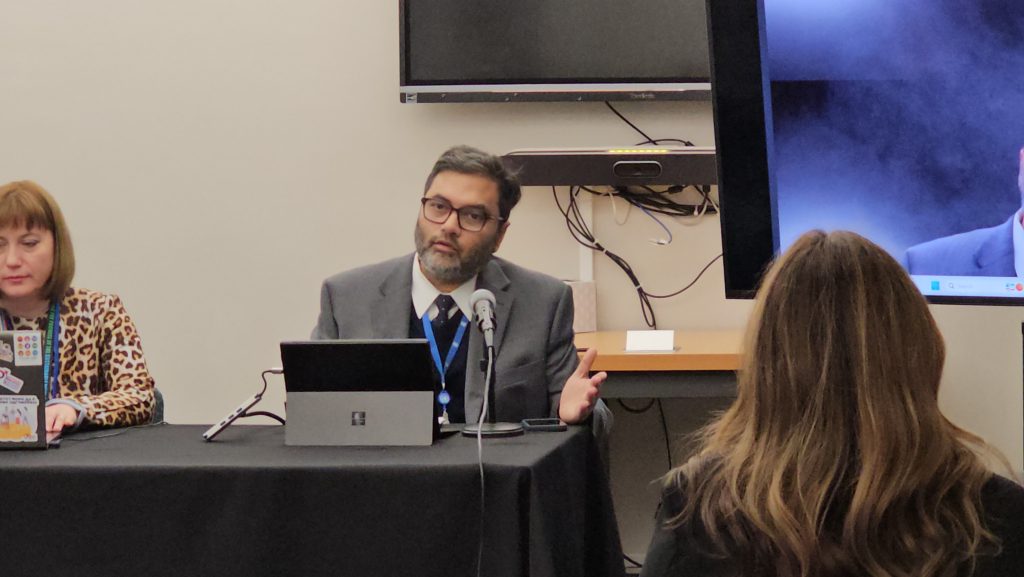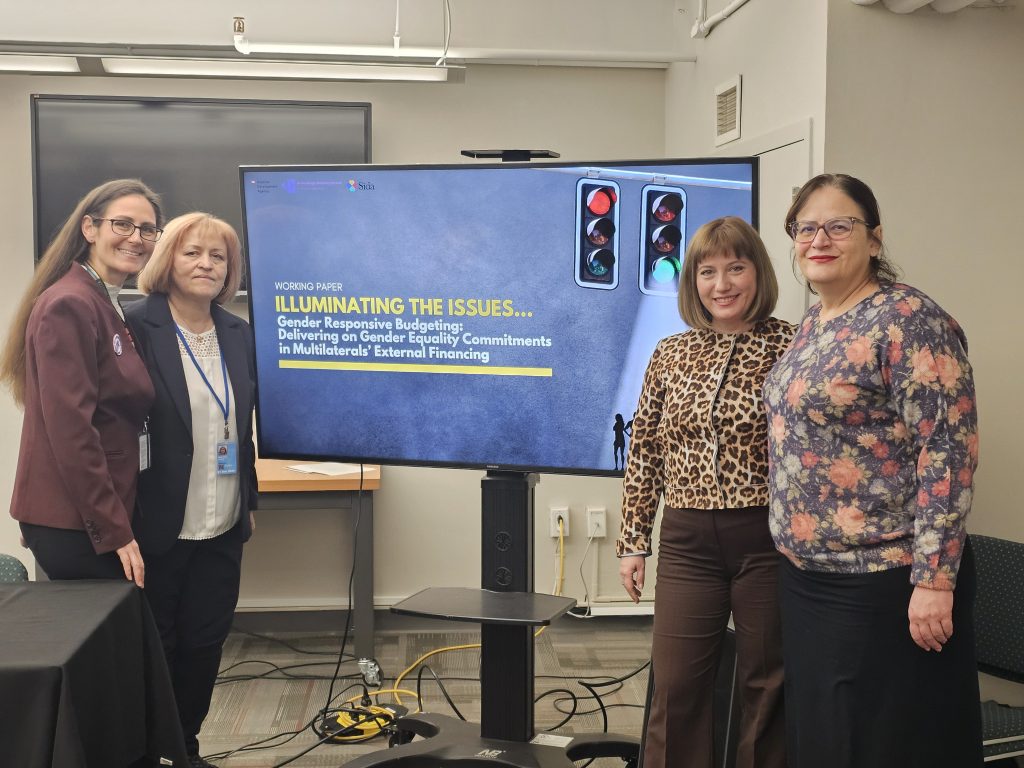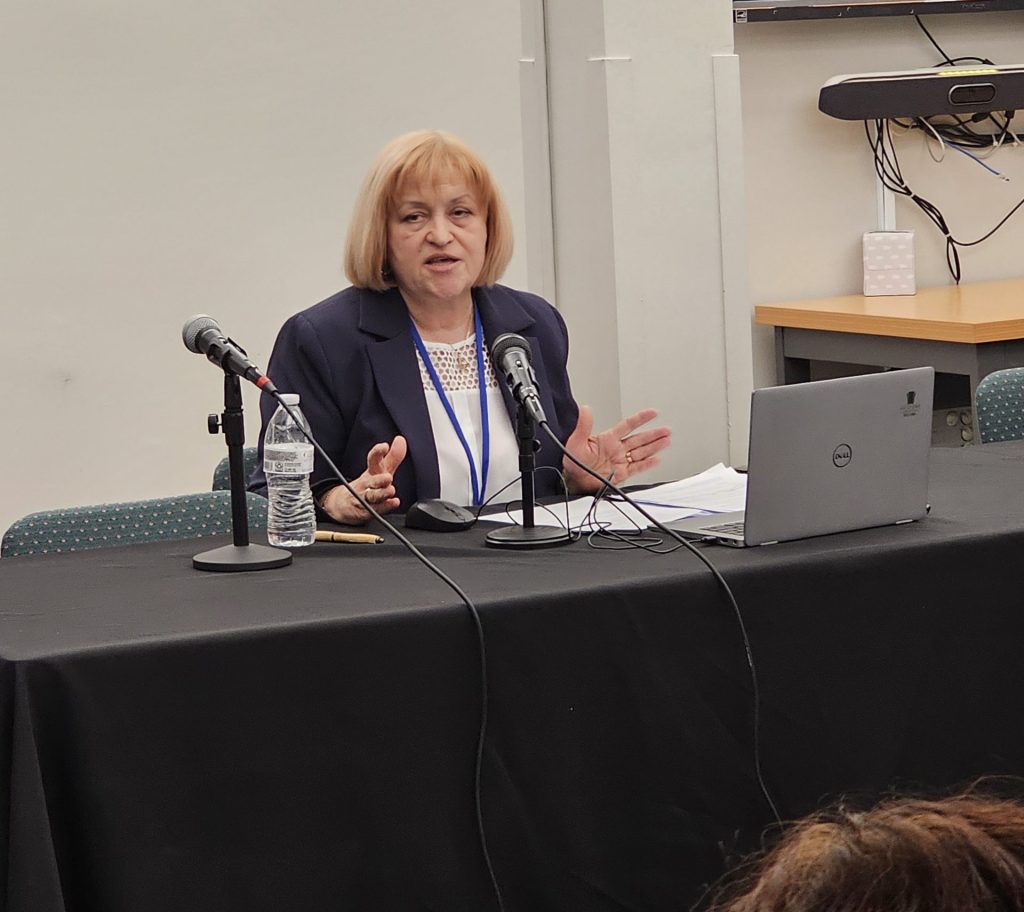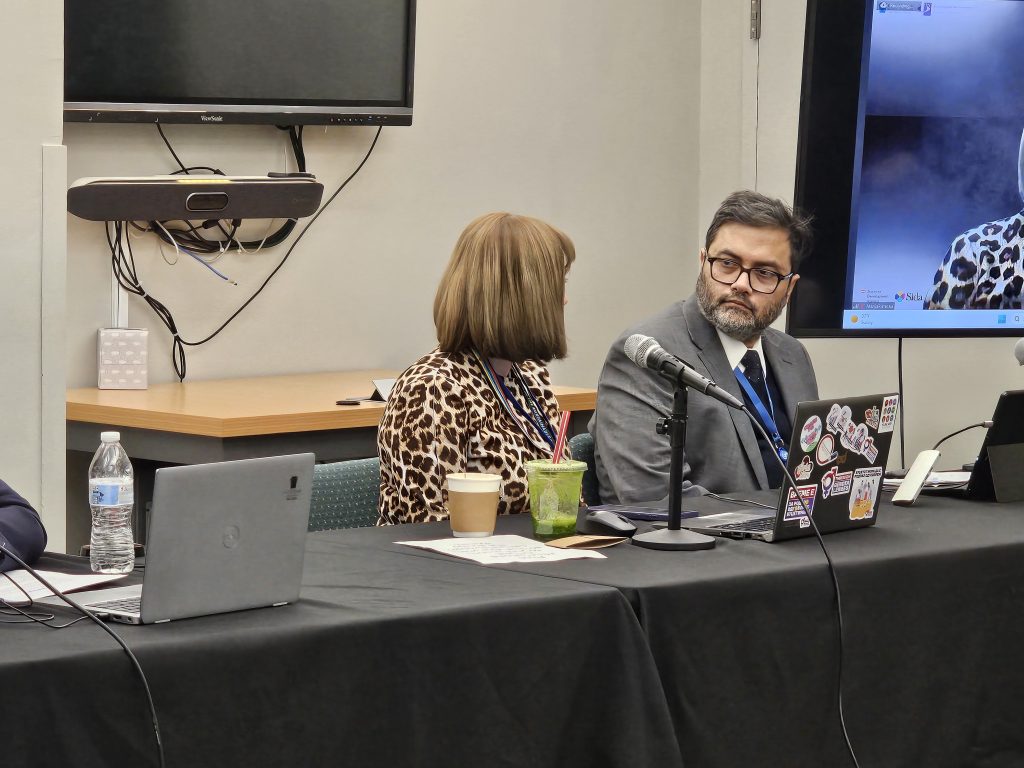NGO CSW68 Parallel Event: “Gender Responsive Budgeting: Delivering on Gender Equality Commitments in Multilaterals’ External Financing”
Gender Budget Watchdog Network is proud to have contributed to the discussions in the last session of the Commission on the Status of Women. Gender-responsive budgeting is important for more effective, efficient, transparent, and accountable financing that contributes to gender equality, making the best use of limited resources for diverse women and men, girls and boys, and other identifying persons. Historically, gender-responsive budgeting work has focused largely on government systems and expenditures. Yet, gender-responsive budgeting can be applied to any budget process, towards enhancing equality, transparency, effectiveness, and efficiency. Multilateral funders like the United Nations (UN) agencies, European Union (EU), and World Bank (WB) are large financial supporters of development cooperation and have made policy commitments to furthering gender equality, most of which require financing. A lack of gender-responsive and disability-inclusive budgeting threatens the success of development programs.
Bringing the topic of how multilaterals are using financing for gender equality to discussions at the CSW was recognized as very relevant especially because multilateral development finance mostly is not reported and although biggest, one cannot determine its impact on gender equality. If multilaterals are to further gender-responsive budgeting in individual states, it could serve their efforts well if they could offer examples to states they are supporting, by having in place strong gender-responsive budgeting, including for persons with disabilities, and “practicing what they preach”. Therefore, the primary objective of this parallel event was to present and further identify recommendations for improving gender-responsive budgeting in development cooperation external financing.
Marija Risteska, PhD, CRPM Executive Director/ GBWN Regional Director welcomed the guests and gave the opening remarks for the discussion. Marija said that “GRB is a transformative tool that needs to be used by multilaterals in planning, executing, and reporting on the use of financing for meeting the gender equality objectives. Having strategic orientation for gender equality is important, but not enough. Mechanisms for tracking financing, the impact it has on closing gender gaps and having well developed follow up mechanisms for measuring results and reporting on the benefits women and girls from all spectrums of vulnerabilities have from this financing is especially needed.”
The first panel speaker was Cibele Cesca, who joined us online. She is a Policy Analyst on Gender Equality and Women’s Empowerment at the OECD’s Development Co-operation Directorate. She has been part of the team producing the OECD Snapshot Overview of the Official Development Assistance (ODA) for governance and gender equality 2011-2021. Cibele pointed out that “Gender equality marker helps us understand how much development finance contributes to gender equality. OECD has the largest and most complete data base on development assistance. The trend this data base shows is that there is evolution, OECD DAC members increased financing for gender equality, but bilateral ODA is performing better then multilateral development finance, which remains mostly not reported in accordance with the gender marker.”
Main points that Ms Cesca highlighted included:
- OECD have the largest and most complete database on official development assistance;
- OECD Gender Equality Policy Marker measures how much of the development finance includes gender equality;
- The share of ODA that includes gender equality objectives has dropped after a decade on the rise, which is concerning;
- Gender equality is unevenly integrated across governance sub-sectors;
- The extent to which development finance beyond bilateral ODA includes gender equality objectives is unknown;
The second speaker of the panel was Nicole Farnsworth, from Kosovo Women’s Network, one of the partners of GBWN. Nicole presented the key findings and recommendations from a Working Paper: Multilateral’s external financing – delivering on gender equality commitment, developed for GBWN on gender equality markers used by the OECD, UN agencies, and EU, as the main tools that these multilateral bodies use for tracking gender equality financing, looking for the answers to the main research question of the paper “To what extent have multilaterals implemented gender-responsive budgeting, particularly in external development spending?”. Nicole concluded that “GRB so far has been used by governments mainly but can be applied to any budget cycle. The multilaterals need to have strategic framework, but also sufficient funding allocated for gender equality, gender budget statement on what the funding will achieve in terms of gender equality and what the impact would be on women and girls and their intersections with age, development status, minority or disability characteristics. Multilaterals can set an example by reporting on the use of their financing for gender equality commitments.”
Main points that Nicole highlighted included:
- Gender-responsive budgeting has focused on governments, but it’s applicable to any budget process;
- Multilateral funders like UNDP, EU, and World Bank are among the largest funders globally and they all have policy commitments to gender equality that require financial support;
- The multilateral’s respective gender markers, tools used to track financing towards gender equality, the weaknesses and benefits of various tools, and avenues for improving tools for tracking funding for gender equality, towards institutionalizing gender-responsive budgeting in development cooperation financing.
- GBWN’s recommendations for institutionalizing gender-responsive budgeting in development cooperation financing.
Ludmila Malcoci, from Keystone Moldova/GBWN followed on the previous speakers on gender equality, but in her speech, she made a disability nexus with implications for strengthening inclusive budgets at national levels. Her presentation highlighted the need for greater transparency in resource allocation to ensure that programmes are gender-responsive and effective in addressing gender and disability. She claims that “While multilaterals have adopted inclusivity frameworks, disability is tackled separately from gender equality. In example, for the World Bank, gender is subcategory in human development, while disability under social protection category; UN LNOB marker is mainstreaming disability inclusion, but while gender equality marker is compulsory, the disability marker is voluntary for UN agencies. This makes the tracking of financing of intersection between disability and gender equality difficult.”
Main points that Ludmila highlighted included:
- No intersectional data available online on gender and disability projects and therefore it is hard to measure the budget really allocated for gender and disability inclusion;
- World Bank data gender portal does not cover disability indicators;
- Most SDG targets do not specifically address disability inclusion.
- Progress on SDG Gender snapshot for 2023 does not integrate indicators related to men and women with disabilities;
- In 2021, almost three quarters of applicable EC ODA projects were *not* reported to be disability-inclusive.
- Only 2% of all applicable EC ODA projects in 2021 had disability inclusion as the principal objective.
One good example showcased during the event was the one of the Austrian Development Agency. Christina Stummer, advisor of the Federal Ministry for Foreign Affairs of Austria, who also joined us virtually said that the Austrian Development Cooperation has been committed to promotion of GRB in policy dialogue since 2005, long before this was requirement nationally. “Now what is EU objective, set with the EU Gender Action Plan III – 85% of all financing to be gender specific – is achieved through setting policy objectives, follow up mechanisms, such as an indicator adopted as target in ADC core budget; institutionalization and monitoring framework set by Parliament. We are proud that over 90% of ADC budget for 2024 is gender marked 1 or 2.[1]”
Main points that Christina highlighted included:
- Since 2005 Austrian Development Cooperation has been engaged in policy dialogue and supported programs in the Western Balkans for more than 10 years and learnt from this long-term cooperation that the continuous support to build institutional environment, meaning policies, mechanisms and capacities is essential for GRB to become institutionalized;
- In 2013 Austria introduced GRB as part of the broader package of the performance budgeting reforms and since then the application of GRB has become a constitutional requirement, which makes Austria unique among OECD countries;
- Each ministry has to define a maximum of five outcomes per budget chapter (at least one has to be gender outcome) as part of the annual budget decision in Parliament;
- Austrian Ministry of Foreign Affairs has defined an impact goals for the development cooperation (Impact goal 3: Sustainably reducing global poverty; strengthening peace and humanitarian security and preserving the environment in the partner countries; the needs of children and people with disability remain a priority);
- Lack of clear definition of “gender-responsive” term in the context of humanitarian aid.
Our last speaker at the panel was Dr. Monjurul Kabir, representing UN Women. Dr Kabir is a Senior Global Adviser and Team Leader, Gender Equality and Disability Inclusion. UN Women is overseeing gender mainstreaming in the UN System and Dr Kabir reflected on how financing for gender equality and disability can improve effectiveness of development finance. He pointed out that “Experience with gender-responsive budgeting, and very nascent efforts on budgeting for gender and disability inclusion, provide entry points for intersectional analysis and its application across the policy-setting, planning and budgeting cycle. If we are serious about SDG’s mantra of ‘Leaving no one behind’, we must embrace an intersectional approach to budgeting and finance to reduce poverty and ensure inclusive and accessible financing to enable an Equal future for everyone. This would go a long way to secure gender equality as well. ”
Main points that Monjurul highlighted included:
- UN women or any UN system organization contributes to certain sectoral investment they’re not the only one who is contributing to that sector so attribution becomes extremely challenging;
- During the COVID-19 pandemic years 2020-2021 health sector made people realize of gaps in health sector in terms of accessibility and a lot of gaps and reaching out to women, person with disabilities different groups people living in remote places in rural areas and those are important for gender equality and this applies to other areas;
- Parliamentary environment in OECD countries or developing countries, is not enabling women in Congress and women in Senate;
- If we look at the intersectional approach, there are many other categories, and if gender does not directly benefit disability, one needs to create a space which is enabling environment where accessibility is promoted across gender;
- Disability is more of a physical disability but there are many other layers of disability which are totally invisible, and that invisibility is a kind of a metaphor for our development that we don’t see many areas the development challenges because they are invisible;
- Auditors around the world are trying to come with auditing criteria for measuring gender equality.
After the speakers’ contributions, Dr Risteska opened the discussions for the audience. In the discussion Jesus Sanchez Mugica from UNDP, emphasized the important role CSOs have in holding governments and intergovernmental institutions accountable for how they use public finances for meeting gender equality objectives. Samah Krichah, from the UK Women’s Budget Group spoke from the grassroot perspective about a gap between what governments are required to do and what women and all the different intersection of vulnerable groups need and in order to address this gap we need quality data that can be interpreted. Lastly, Mary Collins, the new Secretary General of the European Women’s Lobby reiterated that GRB is somewhat abstract tool and simplifying its application for wider use by governments and multilateral agencies is important. This will help efforts by also Parliaments to scrutinize how public finances are redistributed to respond to the different needs of women and men. Marija and Nicole concluded the discussion with the remark that GBWN is an international network working with other key actors and hope to continue to build this coalition through joined advocacy and working together with the UN system with the EU and with the Member States to make it a global alliance.
For a full overview of the discussion at our event please watch the video: https://youtu.be/D67gsvFU6Is?si=Pjb_5sTDneAzacn2
[1] Gender marker 1= contributes to one or more components significantly to gender equality;
Gender marker 2= if the gender equality is the main purpose of the intervention.

